#kato icon
Text
Satan spawn (litterally) + a defeated father fujimoto
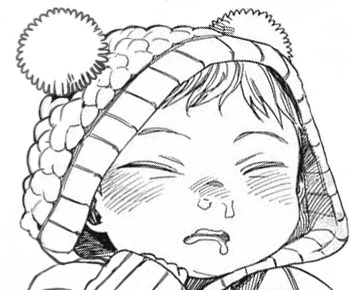



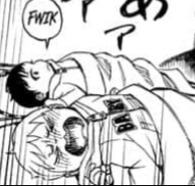
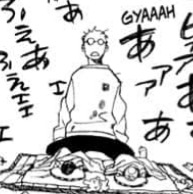
#kazue kato#blue exorcist#ao no exorcist#rin okumura#yukio okumura#father fujimoto#icons#matching icons#mine#blue exorcist icons#ao no exorcist icons#a lot of babies today#shiro fujimoto
749 notes
·
View notes
Text






𝗽𝗮𝗿𝗮𝗱𝗶𝘀𝗲 — 𝗂'𝗆 𝖿𝖺𝗅𝗅𝗂𝗇𝗀 𝗃𝗎𝗌𝗍 𝖺 𝗅𝗂𝗍𝗍𝗅𝖾, 𝖿𝖺𝗅𝗅𝗂𝗇𝗀 𝗃𝗎𝗌𝗍 𝖺 𝗅𝗂𝗍𝗍𝗅𝖾 𝖻𝖺𝖻𝗒



( psd.@sunshinepsds )
#haru katou#haru icons#haru moodboard#katou icons#katou moodboard#haru katou icons#fugou keiji balance unlimited#the millionare detective balance: unlimited#haru kato#fugou keiji icons#fugou keiji haru#alternative moodboard#anime icons#anime moodboard
117 notes
·
View notes
Photo

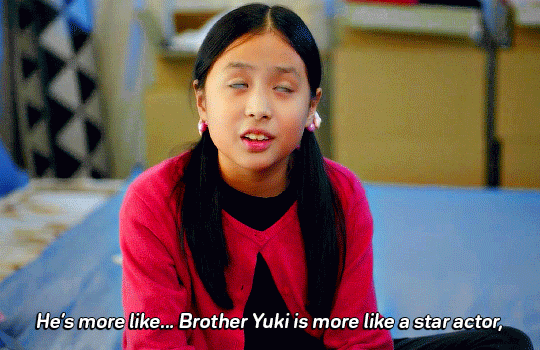





Coming to you live from Yingze getting roasted by his own flesh and blood
PLUS & MINUS (2022) EP.7
#plus and minus#plus & minus#asianlgbtqdramas#asiandramanet#dailyasiandramas#jian yingze#kato yuki#tansedits#ling ling u little icon#edits:psms
238 notes
·
View notes
Text



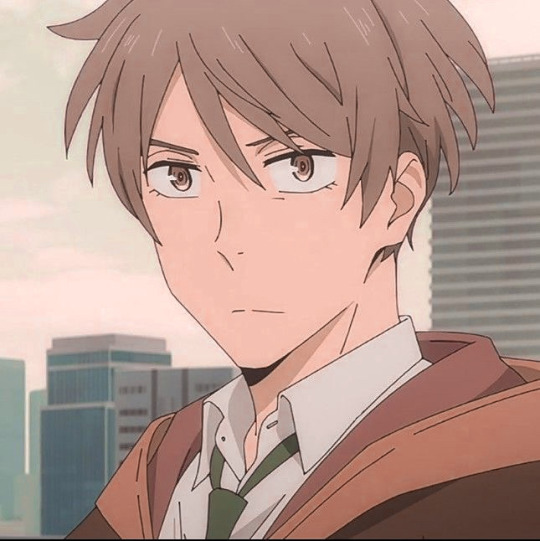
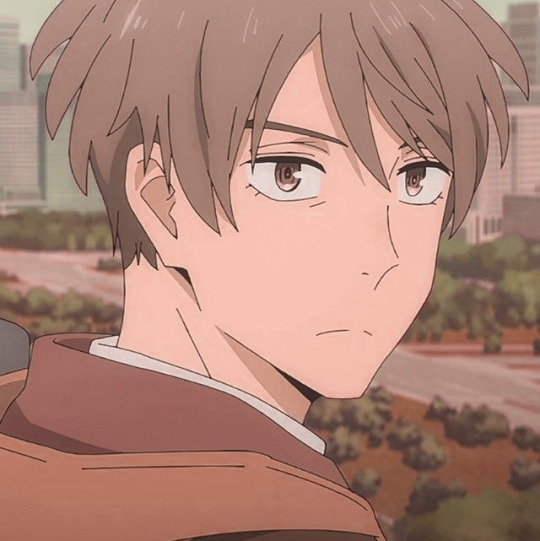




- kato haru .
rb n likes are appreciated ! <3
#kato haru#kato haru icons#balance unlimited#the millionaire detective#the millionaire detective balance unlimited#anime#anime icons
40 notes
·
View notes
Text
i finally changed my avatar everyone say well done kato
#nothing will be as iconic as my previous avatar tho#pink haired kato was the superior one#but that pic was from like 2019 lmao I just hate change
2 notes
·
View notes
Photo

143 HABERU KATO ICONS / GODZILLA SP
TOU – Icons are free to use, free to edit, with or without credit, likes and reblogs are appreciated but not required. Please don’t re-upload or claim as your own. Please let me know about any broken links — DOWNLOAD
#haberu kato#godzilla singular point#godzilla sp#godzilla sp icons#anime icons#roleplay icons#h. black#g. male
9 notes
·
View notes
Text









#karoline kato icons#random icons#models icons#model icons#indie icons#site model icons#grunge icons#icons#netflix icons#psd icons#famous icons#series icons#fashion model icons#site girls icons#girls icons#gurias icons#minas icons#movie icons#no psd icons#music icons
0 notes
Text
'Puella Magi Madoka Magica -Walpurgisnacht: Rising-' Announces Winter 2024 Debut
On Sunday, at Aniplex Online Fest 2023, Aniplex revealed a new teaser trailer for Puella Magi Madoka Magica The Movie: -Walpurgisnacht Rising- (Mahou Shoujo Madoka★Magica: Walpurgis no Kaiten).
The trailer revealed that the anime film, which continues the Puella Magi Madoka Magica main timeline after the events of the 2013 film Rebellion, will debut theatrically in Japan in Winter 2024.

Aniplex also revealed a new key visual for the film and announced that director Yukihiro Miyamoto, who directed the original 2011 television anime series, its two film adaptation, Rebellion, and spin-off Magia Record is returning for Walpurgisnacht: Rising at SHAFT.
He is joined by the previously revealed staff, including the original creators Magica Quartet, chief director Akiyuki Simbou, writer Gen Urobuchi (Nitroplus), and character designer Aokiume. Additional returning staff includes character animation designer Junichiro Taniguchi, who served as Chief Animation Director on previous projects, parallel world designer Gekidan InuCurry (Doroinu), who created the iconic, unique looks of the Witches Labyrinths, and composer Yuki Kajiura.

All of the original Japanese main voice cast from the series and Rebellion are set to reprise their roles:
Aoi Yuki as Madoka Kaname
Chiwa Saito as Homura Akemi
Kaori Mizuhashi as Mami Tomoe
Eri Kitamura as Sayaka Miki
Ai Nonaka as Kyouko Sakura
Kana Asumi as Nagisa Momoe
Emiri Kato as Kyubey
The anime was originally announced back in 2021, but in 2019 at Anime Expo, Homura's voice actress, Chiwa Saito, foreshadowed the sequel, saying that "the actual series has not ended yet" and that she was looking forward to everyone seeing Devil Homura, a reference to the ending of Rebellion, again.

Puella Magi Madoka Magica aired in 2011 to critical and audience acclaim. It became a cultural phenomenon and spawned two movie adaptations, Beginnings and Eternal, the sequel film Rebellion, and multiple manga and video game spin-offs. It is credited with popularizing mixing dark, postmodern tropes with the magical girl genre.
Source: Aniplex Online Fest 2023, Press Release
#madoka magica#puella magi madoka magica#yuri#anime#news#girls love#lgbt#gay#lgbtq#gl#queer#lesbian#manga#yuri anime#mahou shoujo madoka magica
804 notes
·
View notes
Text
Revue Starlight Sports Festival Draft!

As you know, the big Stage Girl Sports Festival Revival will take place in February - literally just a full day event of the various cast members of Revue Starlight (from anime, game, and stage plays) will participate in a funky pretend-highschool sports festival. Today the full teams were decided via draft stream!
The team leaders had previously been announced:

Koyama Momoyo (Aijo Karen, Seisho) - Yellow Team "ZERO"
Tomita Maho (Tendo Maya, Seisho) - Blue Team "This is..."
Nomoto Hotaru (Yukishiro Akira, Siegfeld) - Red Team "HOT"
Nanaki Kanon (Yanagi Koharu, Seiran) - Green Team "shuThuarunomi" (集中あるのみ; "sTay focused")
Also quite funny to me that 3 of the team leaders (all but Maho) are former Sera Myu performers... the Sailor Moon squad has taken over

As is tradition at this point, ensemble member Jinko Moe is the MC for this stream and explains the rules. In the first two rounds, all leaders are free to pick 1 stage girl of their chosing per round from the roster as their top picks. If any chose the same person, they will have to decide by draft - the loser can then choose freely again. After round 2, all other rounds are chosen by draft completely by luck. We already knew not all cast members are going to be there so not every stage girl is available for chosing. Suzuko Mimori (Hikari), Emiri Kato (Tsukasa) and Shiina Hekiru (Souda-sensei) are going to be the MCs at the event, so they won't be participating as athletes either. Also, Tsukui Minami (Suzu) and Kobayashi Yuka (Yakumo-sensei) are a "2 for 1" deal, as they won't be able to make the whole event (iirc).
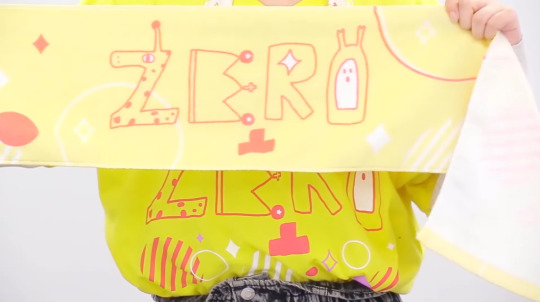
Team Zero's name is the most easily explained. Moyo gets a lot of praise from her colleagues and chat for her genius team logo design. The E is a crown with tomato jewels... I'm in awe

Maho explains the pronunciation of her team: The "..." is performed dramatically with the eyes, like the above. Lol

Nossan's design of course features Hot-kun, Akira's favourite food & beloved plushie. The Hot-kun icon is actually the inside of a chili, not a sun. Apparently.
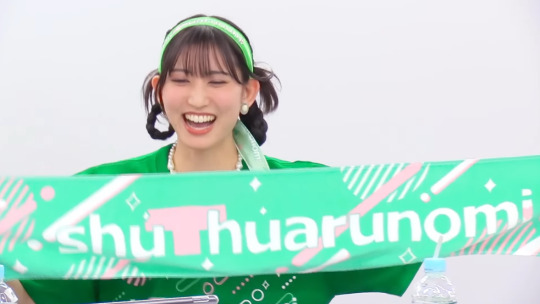
Kanon struggled quite a bit with finding a team name, and after consulting with the other leaders in their Line chat group, she wanted a good Koharu line as the team name. Koharu's "うるさい." ("Shut up.") came to mind, but she thought that was too rude for a team name, so shuchuarunomi it became. She placed a big T (position zero!) for the "ch" sound. Complicated, but clever.
Time for drawing the teams! In round 1, everyone is asked to present their top picks for their team.

Moyo's is: MATSUZAWA! Aka Matsuzawa Kanon, who plays Shiro from Siegfeld Middle School!

Maho's is the one and only Sato Hinata - student council president of Seisho herself, Hoshimi Junna.

Nossan's top pick is: Ikuta Teru of Futaba fame!! And funnily enough...
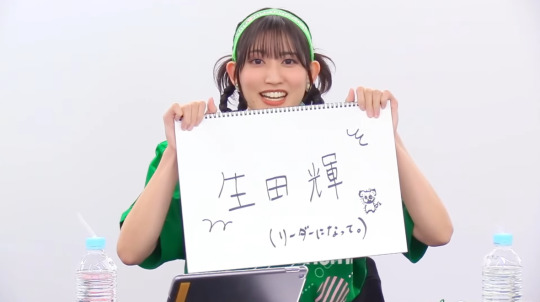
Kanon's pick is also Teru!!! She even drew a tiny Ponzu (Teru's dog) to sway the public. The crowd goes wild. They have to let fate decide who wins over Teru for their team, and Nossan comes out on top. So Kanon gets to choose again, and her next free pick is Haruchan! Aka her fellow Photon Maiden bestie, Iwata Haruki of Mahiru fame.
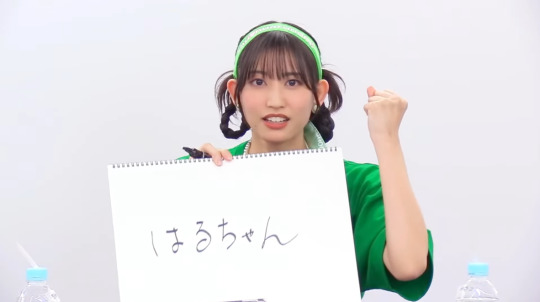
Time for round 2, and last round of free picks! Again, Moyo goes first.

Moyo's second pick is Saeki Iori, who plays Rinmeikan's Yuyuko!

Maho's second pick is Sasaki Mikoi aka Mikoron, Shizuha of Frontier!

Nossan's next pick is Koizumi Moeka aka Moepii, who plays the one and only Banana! Complaints from the other leaders are heard for her making her team too strong. Lol. We'll see about that.

Kanon's pick is Kuge Kokoro of the Siegfeld Middle Schoolers, who plays Minku! No overlaps this time, so everyone gets their first pick!
The next picks are all made by random draft, so it's really just up to luck. Kanon is praying to get at least one other Seiran member for her heart. Everyone is praying not to get Aiai (lmao). Kanon manages to draw Tsumutsumu, another Photon Maiden member, making it a 3/4 for her team (with the fourth PM member, Hinata, sitting in Maho's team). For Nossan, she manages to draw two people very close to her - Ozaki Yuka (Michiru) and Kadoyama Yoko (Hisame), two of Akira's girlfriends. Moyo gets both of the Yumeoji siblings. Maho gets to draw her bestie's wife, KDHR. Kanon's wish is fulfilled by drawing the 2for1 duo of Minami&Kobayashi, her fellow Seirans. The crowd goes wild when Nossan draws Aiai, her team being declared the noisiest for sure (they're not wrong, this will be utter chaos).
Final distribution:
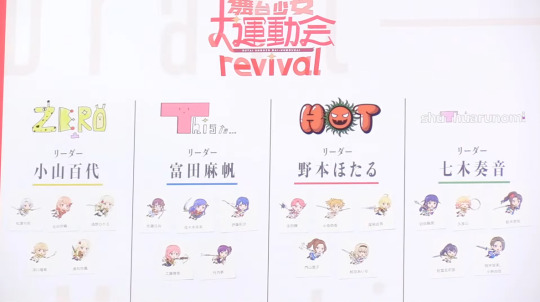
Yellow Team "Zero": Koyama Momoyo (leader; Karen), Matsuzawa Kanon (Shiro), Saeki Iori (Yuyuko), Tono Hikaru (Shiori), Fukagawa Ruka (Ryoko), Kurachi Reo (Fumi)
Blue Team "This is...": Tomita Maho (leader; Maya), Sato Hinata (Junna), Sasaki Mikoi (Shizuha), Ito Ayasa (Kaoruko), Kudo Haruka (Yachiyo), Takeuchi Yume (Mei Fan)
Red Team "HOT": Nomoto Hotaru (leader; Akira), Ikuta Teru (Futaba), Koizumi Moeka (Nana), Ozaki Yuka (Michiru), Kadoyama Yoko (Hisame), Aiba Aina (Claudine)
Green Team "shuThuarunomi": Nanaki Kanon (leader; Koharu), Iwata Haruki (Mahiru), Kuge Kokoro (Minku), Tsumugi Risa (Rui), Sato Yuria (Kuina), Tsukui Minami (Suzu) & Kobayashi Yuka (Yakumo-sensei)
Info & Graphics can be found on the official Revstar twt , the stream was archived so you can watch the shenanigans yourself here!
youtube
#revue starlight#i just had fun watching this stream and wanted to do a write-up. nothing more.#sorry if there are any glaring mistakes...#seiyuu#video#butai shoujo dai-undoukai#personally i think team HOT will win. that line-up is crazy.#but also team ZERO very strong with all these young theater kids.#but lets also not forget. team this is with maho and hiichan. like hiichan is JACKED.#lol we will see!!!#personally i think i have to root for team shuThuarunomi simply because.#Youtube
49 notes
·
View notes
Text
off and monster season OP thoughts
so with new seasons comes new OPs but i'm really curious what's going to happen with Off and Monster seasons. there's some real chances for bangers, but there's also some ??? spots that i have no idea what will happen with. because the arcs are:
Sodachi Fiasco (which will be Marina Inoue/Sodachi's third OP)
Suruga Bonehead (Miyuki Sawashiro/Suruga's third OP
Tsukihi Undo (Yuka Iguchi/Tsukihi's second OP)
Princess Beauty (Shinobu OP, i guess?)
Acerola Bon Appetit (Shinobu OP, i guess?)
Karen Ogre (Eri Kitamura/Karen's second OP)
Tsubasa Sleeping (Yui Horie/Tsubasa's fourth OP)
Nadeko Draw (Kana Hanazawa/Nadeko's third OP)
Zenka Mermaid (???)
Nozomi Golem (???)
Mitome Wolf (???)
Tsuzura Human (???)
Shinobu Mastered (Shinobu's third/fourth/fifth OP?)
Mayoi Snail (Emiri Kato/Mayoi's fourth OP)
Mayoi Snake (Emiri Kato/Mayoi's fourth OP, but it's not really a Mayoi arc so i'm not sure)
Yotsugi Body (Saori Hayami/Yotsugi's second OP)
Yotsugi Shadow (see the Mayoi Snake thing)
Ougi Light (Kaori Mizuhashi/Ougi's second OP)
Ougi Fright (see the Mayoi Snake thing)
Shinobu Suicide (another Shinobu OP)
Nadeko Around (Kana Hanazawa/Nadeko's fourth OP)
there's a lot of characters getting their second or third OP here! for a lot of characters, they have one or two iconic songs for them, so it'll be interesting to see that repertoire expanded. there's a lot of uncertain spaces, tho, and i'm excited to see how those are handled
there's also the case of the secondary arcs in Monster Season, where it's named as such because of thematic reasons while the character in question never appears. they could give them two OPs for the arc, or do something weird. not sure
also, i wonder if, when we get an Ougi OP, how that's going to be played, since the previous two were definitely girl Ougi, but this new OP wouldn't be. if nothing else, it would be a great opportunity for Mizuhashi to stretch her range
also this is an upward limit of 21 different OPs, and even if they take liberties on some of the questionable ones, it's still over a dozen new OPs. that's a lot to look forward!
11 notes
·
View notes
Text


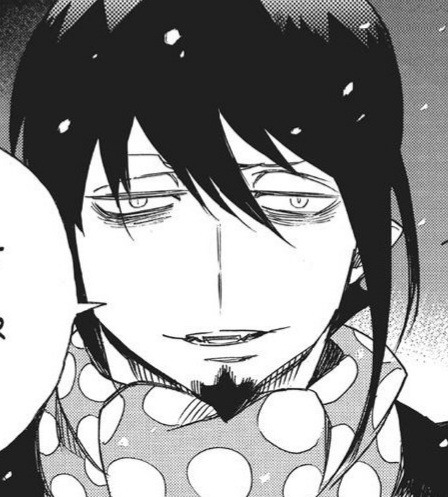


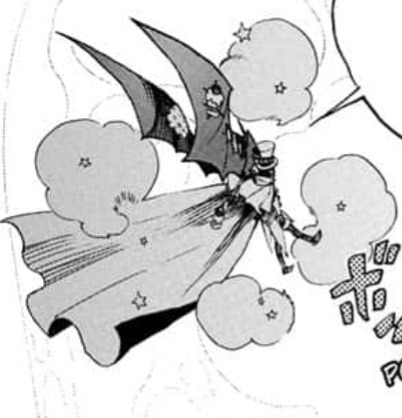



#mephisto pheles#blue exorcist#ao no exorcist#kazue kato#icons#blue exorcist icons#ao no exorcist icons#mephisto pheles icons#mine
259 notes
·
View notes
Text
My chaotic process of coming up with a name for the Keeper in real time! (Sorry, Keeps, I kinda forgot about you woops)

Picture of the Keeper
Usually I start out with a translator, in this case it's English to Greek.
Keeper - Fylax
If I like how it sounds I will then do some research on its meaning (and make sure it's relatively accurate).
Ok, so Fylax means keeper and guardian, someone who tends to something.
After that, I will reasearch similar spelling names depending on how normal this character is. The scale is ''The Old World Trio (Halcyon, Kato and Basile) -> Normal person (Carl)''.
Keeper is/was a normal humanoid before gaining the title (like Carl who became the Boatman), so let's try researching the name 'Felix'.
Felix means lucky! (The Latin origin is fine since Keeper is not as tied to their Greek inspiration as someone like Kato - Thanatos)
I will go check if Keeper's inspiration (Hermes) has anything to do with luck.
So apparently Hermes is the god of 'trade, wealth, luck (yay), fertility, animal husbandry (livestock, so caring for animals for a purpose. In this case, since souls don't eat the animals Keeper just keeps them happy for atmosphere.), sleep, language, thieves, and travel (Keeper travels a lot, so yeah it tracks)' copied from Google. Neat.
Keeper's gender reveal: She uses she/her pronouns, so either I use the name Felix as is or I can use it as a nickname, depends if I can find a full name which sounds good and correlates to the inspiration.
Well, in this case I like Felix! It's a cute and simple name and really suits the mischievous Keeper with her iconic flaming robes.
That was fun, and actually the least amount of brainstorming I did for a name so far. (The last easy name was Halcyon - Hypnos)
#names are hard#character design#worldbuilding in progress#original universe#original world#original character#oc#names#greek inspired#original story#worldbuilding#writing#long reads#sorry for taking so long but i remembered you exist because you and your flaming robes are who people want to know more about
9 notes
·
View notes
Photo




★ { Ao no Exorcist / 青の祓魔師 } ★
↳ Rin & Yukio: did another edit from Kato’s art she posted to celebrate Blue Exorcist returning from hiatus! +500x500 icons (cleanup/edit)
#ao no exorcist#blue exorcist#rin okumura#yukio okumura#exaoex#exrinokumura#exyukiookumura#exkatoillustration#mine#my edit
509 notes
·
View notes
Text
youtube
This is a good freakin’ video. Whenever I feel like crap because haters wanna talk about a certain long-nosed anime character with a knack for storytelling 🤥, I go back to this video.
It actually got taken down awhile back. So, someone who archived the video reuploaded it, and I got to watch this gem. Apparently giano 182 and YouTube did not mesh well 😒.
Regardless, please check this out if you haven’t watched. It’s so rewarding and inspiring. And when Oda finally comes around to giving Usopp that well-deserved focus and another baddie moment, then this video will be even more amazing. Elbaf *cough* Elbaf.
The music, the build up, and the ending to the video are such a triumph. It ends with Usopp flashing one of his most iconic poses where he points his finger up to the sky, his trusty slingshot in hand. (Please, please don’t say a Sogeking joke. I want Usopp to be recognized. It’s him, people! Sogeking is Usopp!).
I think the/this AMV tribute video could turn an Usopp hater into a genuine fan. How can anyone not root for Usopp (such an underdog of a character)? This video captures his struggles and well-deserved feats. He’s like the human being in all of us (we’re humans. We don’t have DF). Even my 50-something year old mother can relate to him! ❤️ I suffer from imposter syndrome and I’m constantly having my dreams compromised and challenged because of the onslaught of monsters and enemies constantly coming into my life. And my chance of winning is slim to none. Seemingly so. It’s hard to not be negative. Fearlessness doesn’t exist!
See? I’m still being negative 😧
I’m really waiting for Elbaf because Usopp definitely has the heart of a giant. I’m still rooting for the Sniper King/Brave Warrior of the Sea. Usopp is the goat and the real mvp of the Straw Hats and all of One Piece!
(Like Green Hornet was The Kato Show in Hong Kong. One Piece is Sogeking for me).
It’s hard out here for an Usopp stan, but like those Elbaf giants I (we) fight anyway. (Maybe that should be a name for Usopp fans. Usopp giants).
#giano 182#giano182#heart of a giant#the heart of a giant#this video gives me serious feels#if Elbaf proves to be Usopp’s arc#I hope that this video will get a sequel if giano 182 comes back#if giano 182 doesn’t come back then I hope someone else can make the sequel#Elbaf#elbaf arc#captain usopp#usopp one piece#luffy vs usopp#god usopp#straw hat usopp#op usopp#usopp#one piece usopp#usopp appreciation#opla usopp#sogeking#sniper king#Usopp sogeking#one piece#one piece anime#op#one piece manga#water 7 usopp#usopp water 7 defender#david and goliath
17 notes
·
View notes
Text
Let’s talk about the return of Ao no Exorcist (ch133.1 & ch133.2)!
After a long hiatus, it came back last month! :D And I have some thoughts to share!
Rin as a diversion

To start with, it really struck me that Rin doesn’t seem emotionally involved in this fight. Not only does he see himself just as a diversion, but also, he doesn’t seem particularly invested in fighting against Satan, despite “kicking Satan’s butt” being his initial motivation back when the story started.
On the one hand, it shows his growth after he visited the path and realized that Satan’s madness, Yuri’s and Fujimoto’s deaths were more complicated than just being Satan’s fault. It also shows that he knows he’s now one part of the team designed to take Satan’s down and that he has to focus on his role.
On the other hand, this detachment might hide how conflicted he is about his own demon self? A part of him that he recently managed to tame and cage (using this side of his when he decides to), whereas the answer probably lies more into these two natures within him learning to coexist peacefully.
To be honest Rin kinda worries me in this fight, I hope he doesn’t pull a Yukio, now that Yukio’s doing better. Speaking of which...
Yukio’s openly trusting his allies



I AM SO HAPPY! I had predicted that Shura’s presence in the group was mostly so that Yukio would have someone he would accept to rely on and I’m even happier that Shura jokes around that he must be sick to admit he’s not 100% fine, all the while openly recognizing that mentally he’s doing better.
I love how mature she’s being despite the scene being hilariously crafted and I’m glad they had this genuine moment of apologizing to each other when Yukio, in particular, used to be openly angry at Shura for sometimes messing with him.
On top of relying on Shura, he also respected Neuhaus’ analysis of the situation, despite Neuhaus once being his enemy, which again shows that he’s doing a lot better, allowing himself to work with his allies instead of deciding to carry the burden solo (especially meaningful, considering that he thought Satan’s comeback was his fault, until Lightning refused to blame him).

Keep it up, Yukio! Hopefully, you’re going to be fine, my boy. ^3^
Lucy, Shima and the black flame
First of all, can I just say that Lucy is a true icon, as the older badass female warrior having the loyalty of black flame’s dragon demon?
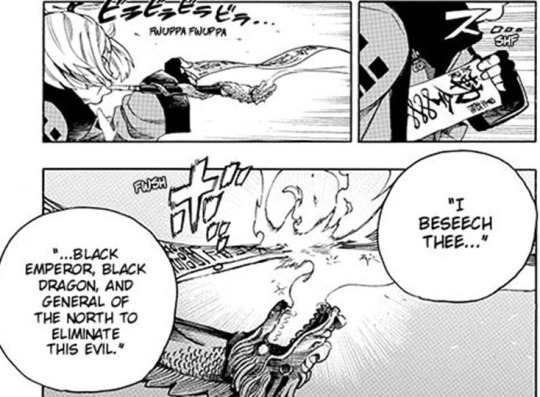

TBH, I already addressed in the past that a lot of girl characters in Ao no Exorcist are given roles that would usually be given to guys in other Shonen series, which is a huge reason I’m so fond of Kato-sensei’s writing.
Between Shiemi who was “the main girl” but who turned out to be the mysterious ace no one knows the truth about, Shura as the mentor, Yuri as an intelligent woman who defeated her abuser and now Lucy, an older lady, as the badass warrior in charge, I enjoy that we’re allowed to see women being considered as strong and skilled as men.
I have no idea about the consequences of Satan’s attack on her...

...but hopefully she’s going to survive, because she’s way too awesome to pass away right now (also still want her at some point to say to the twins that they “truly are Yuri Egin’s kids”).
That being said, now that she’s possibly injured and thus out of the fight...

...Maybe Shima will be forced to take over, wielding another strong demon kin of the black flame category, seeing how useful they are against the Illuminati?
Satan’s an ass who deserves to be sealed away
Hopefully, this part isn’t anything new to anyone who’s been reading this series for a while.
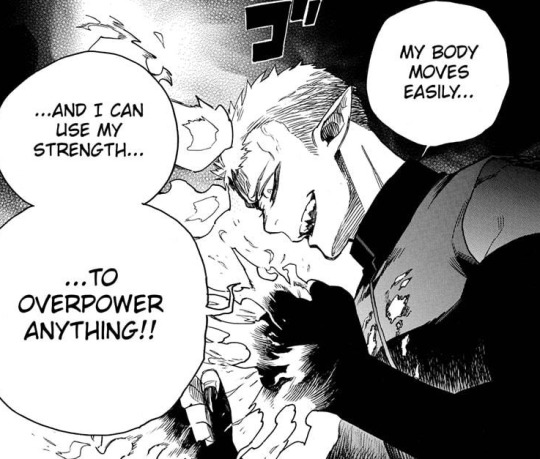

Though I would just like to point out that, since destroying everything but his vessel is “the greatest joy”, clearly it’s yet another proof that Satan never loved Yuri and only saw her as relevant as long as she could provide him with whatever he wanted.
Again, that’s nothing new, but since there used to be some Satan/Yuri shippers in the fandom, I always love to point out that he’s a textbook abusive asshole who deserves to go down. :D
By the way, special mention to the King of Insects
Yeah kudos to Beelzebub for having a super cool introduction a few chapters ago only to become quite lame in this one, lmao. xDD
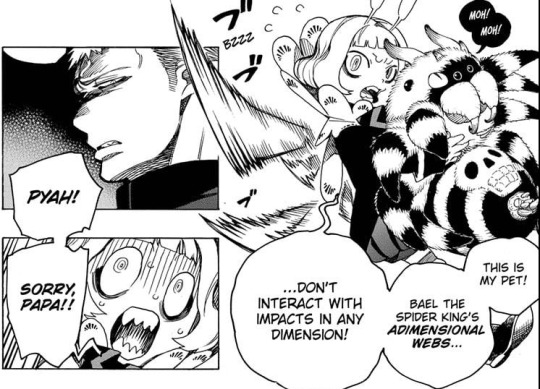
Finally, let’s talk about the greatest disaster to happen soon
AKA, "Shadow must bow before the strength of light”...


Truly, I loved Arthur’s incredible show of strength at the end of the chapter. However, if that doesn’t scream that he’s going to become a wonderful and strong vessel for Lucifer, at this point I don’t know what does. :/
I’d like to point out that for now the battle seems to be in favor of the True Cross’ Knights only because the first defeat is near, probably when Lucifer manages to possess Arthur and very probably beat the shit out of our dear King of Time who will then lose his vessel (how symbolic, when Arthur openly hates Mephisto).
At this point, Shiemi will probably become unable to seal Satan away without Mephisto, leading to the True Cross Order failing for now as the Illuminati will stand strong with both Satan and Lucifer inhabiting almost invulnerable vessels. ¯\_(ツ)_/¯
Prepare for the worst, fellow AnE fans, it will come soon... (actually I can’t wait). :D
As always, loved it! See you guys soon!!
#ao no exorcist#okumura rin#okumura yukio#arthur auguste angel#kirigakure shura#shima renzou#lucy yang#igor neuhaus#ane 133#ane theory#my analysis
110 notes
·
View notes
Text
70s Japan Trends Through the Music Charts (Part 2)
During the 1970s, the Japanese music industry was in the process of forming its identity. In addition to mirroring the musical preferences of the nation, the charts also served as a reflection of the prevailing societal trends and ambitions of that era. In this series, we chronicle the most significant musical trends of the decade.
70s Japan Trend Through the Music Charts (Part 1)
Trend #4: The Impact of Discover Japan
In 1970, Osaka hosted the World Expo, marking a significant milestone for post-war Japan following the 1964 Tokyo Olympics. To accommodate the influx of visitors, the government expanded the rail network, enabling over 60 million people—half of the nation's population—to journey to the World's Fair. However, as the Expo drew to a close after six months, concerns arose about the railways becoming obsolete. So, with the help of the ad agency Dentsu, they devised a campaign to stimulate domestic tourism by rail. The result was "DISCOVER JAPAN," one of the most iconic campaigns of the decade (which, curiously, was partially inspired by Ivy Fashion brand VAN).
"DISCOVER JAPAN" profoundly impacted Japanese society by popularizing solo travel and igniting domestic tourism, particularly among young women who ventured out on their own. This trend was further fueled by the launch of the first female fashion magazines, AnAn and Non-no, both of which extensively covered visits to charming cities across the country. Cities known as "Little Kyoto," which retained their Edo Period architecture and charm, were particularly attractive to these travelers.
Influenced by fashion magazines, these trend-conscious women journeyed to small cities throughout Japan, earning them the moniker "AnNon" (a fusion of AnAn and Non-no). Their impact during the 1970s was significant enough to be mentioned in a song by Sada Masashi, one of the decade's prominent folk singers.

"DISCOVER JAPAN," the print and TV campaign devised by Dentsu, is one of Japan's most successful and era-defining marketing campaigns.
Sada Masashi rose to fame in the early 1970s as part of the folk duo Grape before launching a successful solo career. In 1977, his song "Ehagakizaka," which paid tribute to his hometown of Nagasaki, mentioned identically dressed stylish young girls in denim, clutching AnAn and Non-no magazines while photographing their surroundings. This song vividly captured the aspirational girl culture of the 1970s, characterized by "healing" domestic trips in pursuit of tranquility and small pleasures, hippie and boho-inspired fashion, and folk music as the soundtrack.
Masashi Sada's song and the AnNon-zoku tribe aside, "DISCOVER JAPAN," had an immense impact on different layers of Japanese society. And that included the music charts. In 1971, the two best-selling singles, "Watashi no joka-machi" by Rumiko Koyanagi and "Shiretoko ryojou" by Tokiko Kato, surpassed 1 million copies sold. Both perfectly embodied the campaign's spirit in highlighting the hidden beauties of Japan.
"Watashi no jokamachi," or "My Castle Town," marked Koyanagi's explosive debut, selling over 1.3 million copies. This enka-infused kayokyoku ballad paid homage to cities with Edo-like architecture, often centered around a feudal lord's castle, evoking a peaceful, melancholic atmosphere in its lyrics. Rumiko continued to sing about regional Japan's charms the following year with another hit, "Seto no Hanayome" (The Bride of Seto). Meanwhile, the folk-inspired "Shiretoko ryoujou" (Shiretoko Journey) celebrated the unique beauty and culture of the Shiretoko peninsula on Hokkaido Island.
In the same year, other artists also succeeded by spotlighting provincial Japan. Enka superstar Shinichi Mori delved into this theme with "Boukyou" (Nostalgia). At the same time, Yuuko Nagisa found success with a Japanese rendition of The Ventures' "Kyoto Doll," titled "Kyoto no Koi" (Love in Kyoto). She would go on to have another top-selling single with her version of another Ventures song, "Reflection in Palace Lake," transformed into "Kyoto Bojo" (Kyoto Longing).
Trend #5: The Legend of Momoe Yamaguchi
"Aidoru" or "idols" are cute girl/boy-next-door types who sing, dance, act, host TV shows, and star in countless commercials. They stand as one of the cornerstones of the thriving multi-billion yen Japanese entertainment industry. The 70s was an essential era for consolidating this type of star. And one idol, in particular, shone the brightest: Momoe Yamaguchi.
Momoe is a legendary star and an example of an "aidoru" who excelled at everything, exuding sophistication, talent, and sex appeal. The fact she retired from public life at the height of her fame cemented her mythical status.

Momoe Yamaguchi in her prime, the idol industry's gold standard.
In 1972, at the tender age of 13, Yamaguchi auditioned for the talent search TV show "Star Tanjou!" (A Star is Born). Her crisp singing voice and mature beauty immediately captured the industry's attention. Hori Production, the entertainment agency, and Sony CBS label swiftly recognized her potential and signed her. In May 1973, five months after her televised audition, she made her official debut with the single "Toshigoro" (Adolescence). Although Sony had a history of immediate success with newcomers, Momoe's first single received a tepid response, so her label decided to court a bit of controversy for her sophomore outing. "Aoi kajitsu" (Ripe Fruit) had the innocent-looking 14-year-old girl singing, "you can do whatever you want to me, even if they say I'm a bad girl." The racy lyrics worked, and the single was a success.
A few months later, Yamaguchi's backers repeated this formula with "Hito natsu no keiken" (One Summer Experience). The song began with a suggestive promise: "I'll give you the most precious thing a girl has." The lyrics were laden with double entendres, describing a "sweet trap of temptation" that can only be experienced once. She sang, "if the person I love is pleased, then I'm happy. I don't mind if you break it," which could be understood as a reference to a girl's hert or hymen.
The single was an explosive hit, propelling 15-year-old Yamaguchi into the A-list. For the remainder of her career, she was frequently asked about the "most precious thing a girl has," to which she'd always offer a stern-looking reply: "her devotion."
The young, mature-looking girl singing thinly veiled songs about sexual awakening with a dark, serious-looking image set her apart from the prevalent happy-go-lucky idol aesthetic. However, it wasn't merely reliance on gimmicks that transformed her into a legend. In 1976, after firmly establishing herself as a star, she parted ways with her frequent collaborators, lyricist Kazuya Senke and composer Shunichi Tokura. Beginning with the single "Yokosuka Story," she partnered with the husband-and-wife duo Yoko Aki and Ryudo Uzaki.
Ryudo Uzaki, the frontman of the popular enka rock band DOWNTOWN BOOGIE WOOGIE BAND, infused her kayokyoku tunes with a rock edge. Through her lyrics, Yoko Aki redefined Momoe's image as a confident, clear-eyed girl transitioning into womanhood. Initially, Sony opposed Momoe's desire to collaborate with Aki and Uzaki, but the partnership ultimately helped her reach her commercial peak.
"Yokosuka Story" was Momoe's first single to reach the number 1 spot on the weekly charts. The Aki-Uzaki duo penned several other hits for her, including "Playback Part 2" and "Sayonara no mukougawa" (The Other Side of Goodbye), and opened doors for her to collaborate with other luminaries of Japanese music. Two of her most memorable hits, "Cosmos" and "Ii hi tabidaichi" (Beautiful Day Departure), both released in 1978, were penned by folk superstars Masashi Sada and Shinji Tanimura of Arisu, respectively. The latter became the theme song for the iconic DISCOVER JAPAN TV commercials.
Speaking of commercials, idols worth their salt can't limit themselves to music. Momoe earned millions being the face for Toyota cars, Fujifilm photographic films, Casio watches, and Glico confectionary products, among others. She also starred in highly-rated TV dramas and ventured into the world of film.
Starting in 1974, she appeared in two romantic films per year, always paired with Tomokaza Miura as her co-star. While Momoe pursued various ventures, Miura's acting career primarily revolved around being her on-screen romantic partner. Their undeniable chemistry and the box-office success of their films led to them being known as the "golden combination."
In a concert at the end of 1979, Momoe stunned her audience by revealing that her on-screen partner, Miura, was her real-life boyfriend. In a subsequent press conference in March of the following year, she confirmed her intention to marry him and retire officially. In September, she released her autobiography, which sold over 1 million copies in a month. In October, she bid farewell through a series of TV specials and a concert at Nippon Budokan. Her farewell concert reportedly earned Hori Productions over 20 million dollars, according to figures provided by the agency to Billboard magazine at the time. Momoe's success allowed HoriPro to become one of the best-established entertainment agencies in Japan, a position it still holds today. Her final performance took place at HoriPro's 20th-anniversary event, where she sang "Ii hi tabidaichi." In November, she married Miura and disappeared from the media.
The Japanese public obsession with her never waned. Paparazzi tried to capture her at her son's kindergarten graduation ceremony and doing classes at a local driving school. Many speculated she'd eventually come out of retirement. She never did, which only helped feed the obsession around her.
During the 1970s, Yamaguchi enjoyed immense success, but she was one of many popular female idols. The narrative created by her retirement elevated her to the status of a larger-than-life legend. She became the gifted, beautiful young woman who succeeded as a singer, a TV actress, and a movie star before choosing the ultimate happy ending: marriage. By choosing love, Momoe Yamaguchi, the legendary idol, transformed into an ordinary woman—a real-life fairy tale that resonated deeply with Japanese society.
Her decision was driven by profound motivations. Momoe revealed in her autobiography that she was raised by a single mother, the product of an extramarital affair. Her challenging upbringing and her father's late appearance to capitalize on her fame instilled a deep desire for a traditional, happy family life. She also grew weary of the relentless demands of stardom and the repetitiveness of performing the same songs. Thus, she made a heartfelt choice to relinquish fame and public life to give her husband the most important thing a girl has: her devotion.
Trend #6: Idols' Rise
The term "idol" in the Japanese entertainment industry finds its origins in the French film "Cherchez l'idole" (1963), which enjoyed immense popularity in Japan. Initially, "Aidoru" was used to describe the film's star, Sylvie Vartan, before it evolved into a general term to describe youthful-looking triple-threat domestic stars.
Before the coining of the term, "idol-like" stars had already existed. In the 1930s, Machiko Ashita attracted crowds to the Moulin Rouge Shinjuku and served as the face of several brands. In the 1950s, rockabilly stars enjoyed massive popularity among the youth, and the 1960s saw the rise of manufactured "group sound" bands and the female duo The Peanuts, comprised of twin sisters. Legendary stars such as Hibari Misora, Sayuri Yoshinaga, Teruhiko Saigo, Yukio Hashi, and Kazuo Funaki thrived as both movie stars and successful singers.
However, the 70s marked the consolidation of the "idol" aesthetic and career path, paving the way for the "golden era of idols" in the next decade. Essential for it to happen was the widespread adoption of the medium where idols shine the brightest: television.
TV allowed entertainment agencies to aggressively push their young, fresh-faced talents in front of a broad audience. They populated music and variety shows, commercials, and dramas. They were immaculate, life-sized stars ready to play the part of the nation's sweethearts.
Although history has crowned Momoe Yamaguchi as the ultimate 70s idol, she was just one among many during most of that decade. A closer examination of the numbers reveals that Mari Amachi, a female idol, had the most significant short-term impact during that time.
Amachi was first introduced on the popular TBS TV drama "Jikan desu yo" (It's Time) in 1971, playing "Tonari no Mari-chan" (Next Door Mari-chan). She played the minor role of a cute girl who lived close to the show's primary setting, a family-run public bathhouse, and often appeared by her window, playing guitar and singing. By October, with the backing of the biggest entertainment agency of the era, Watanabe Production, and Sony CBS, 19-year-old Mari Amachi officially debuted with the single "Mizuiro no Koi" (Light Blue Love). It was a hit—the first of many. Mari would be 1972's best-selling act, achieving high sales with four albums and five singles.
Mari's image, characterized by an innocent aura, a happy-go-lucky personality, and frilly dresses as stage outfits, became the prototype for female idols. Her short hair and chiseled smile earned her the nickname "Sony's Snow White," evoking the image of a fairytale princess. Unsurprisingly, she was particularly popular with children, leading Watanabe Pro to license her likeness for various goods, including the coveted "Do-Re-Mi Mari-chan" Bridgestone Cycle bicycle, highly sought after by young girls in the early 70s.
Despite her rapid rise to fame, Mari's time at the top was short-lived. By 1974, another Watanabe Pro idol, Agnes Chan, was already surpassing her in sales. In 1977, Mari's health deteriorated, and she took a lengthy hiatus, officially attributed to thyroid issues but later revealed to be depression triggered by her waning popularity. In 1979, she attempted a comeback, even bagging an endorsement deal for an ultrasonic facial device, one of the year's hit items for women. But her time had passed and she didn't find much success. Eventually, Mari's career took unconventional turns, including involvement in a softcore porn movie, the release of nude photobooks, and a transition to becoming a "fat" talento (TV personality), followed by a weight-loss book.
In 2015, in her last public interview, she revealed that, at 63, she was living in a retirement home in the Tokyo suburbs. Her fan club covered her expenses, while her daughter provided a modest weekly allowance. This marked a stark contrast to her glamorous peak years and serves as a reminder of the challenges idols face in the Japanese entertainment industry, particularly women, and how easily discardable idols can be. It also shows how wise Momoe Yamaguchi was, bowing out gracefully at the right time.
However, Momoe Yamaguchi and Mari Amachi represent two extremes within the realm of idols. While Mari achieved record profits for two years before facing decline and eventual obscurity, Momoe maintained relevance for nearly a decade before choosing to marry her on-screen partner, retire, and become a living legend. Most other 70s idols did not experience such remarkable destinies.
In 1971, two other young idols, Rumiko Koyanagi and Saori Minami, made their debut alongside Mari Amachi. The trio was collectively known as the "shin sannin musume," or the "three new girls." Their joint concert at the Budokan on Christmas of 1972 solidified their shared nickname.

The Shin San-nin Musume. Clockwise: Rumiko Koyanagi, Mari Amachi, and Saori Minami.
Rumiko Koyanagi had her skills honed at the Takarazuka Music School. Takarazuka is a very traditional, all-female theater group, and their training academy is known to be highly rigorous and selective. Koyanagi graduated top of her class but wanted something other than a musical theater career. Instead, her goal was to debut as a solo singer. So she left the Takarazuka Revue and signed with Watanabe Pro and Warner Pioneer label to fulfill her dream. Her first song, "Watashi no joka-machi" (My Castle Town), buoyed by the "Discover Japan" boom, surpassed 1 million copies sold, becoming the best-selling single of 1971.
Rumiko's repertoire predominantly featured enka-influenced kayokyoku. Her classical sound may not have been as appealing to the youth as some of her peers' slightly more modern tunes, but it ensured her stable sales throughout the decade. In her sixties, Rumiko has reinvented herself as a passionate soccer fan and a glamorous senior lady, sharing lifestyle tips and her love for Chanel and Lionel Messi on Instagram. She also conducts dinner shows, a lucrative type of intimate concert usually held at luxury hotels, where fans pay hefty prices to enjoy a multi-course dinner while listening to nostalgic hits.
The third "shin sanin musume" is Saori Minami. Minami didn't have a million-selling debut like Rumiko, nor did she become an instant sales behemoth like Mari. That didn't mean she was less impactful. Quite the opposite. Hailing from Okinawa, still under US occupation during her debut, Saori impressed Japan with her exotic beauty. In 1971 and 1972, she outsold every other female idol in bromide sales. Bromide is the local terminology for photographic portraits of celebrities, and historically, its sales are the best way to gauge how popular an idol is.
Her first single, "17-sai" (17 years old), became a classic and enjoyed enduring popularity, with several artists covering it over the decades. After retiring in 1978 upon her marriage to legendary photographer Kishin Shinoyama, Saori made a comeback in 1991 but has made only sporadic public appearances since then.
Two years after the emergence of the "shin sannin musume," a new trio of newcomers known as the "Hana no Chuusan Trio" or the "Chuusan's Flower Trio" (a reference to the fact all of them were in Chuusan, the third year of middle school) came into the spotlight. Masako Mori, Junko Sakurada, and Momoe Yamaguchi were all revealed in the talent search TV show "Star Tanjou" (A Star is Born). In 1975, by the time they were in their second year of high school (kou 2), they co-starred in the successful film "Hana no Kou 2 Trio."
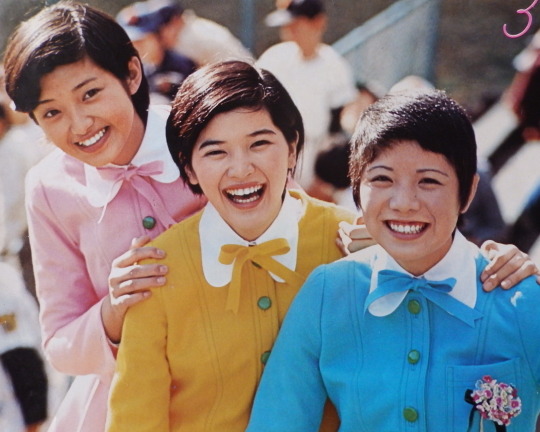
The Hana no Chuushan Trio: Momoe Yamaguchi, Junko Sakurada and Masako Mori.
At 13 years old, Masako Mori secured her place as the inaugural "Star Tanjo" grand champion in 1971. The following year, she debuted under Hori Production and swiftly soared to success. Mori's music was deeply influenced by enka, and by the close of the decade, she had solidified her status as a fully-fledged enka star. In 1986, she tied the knot with enka superstar Shinichi Mori, leading her to retire from the entertainment scene. However, in 2005, following her divorce, the former idol made a comeback, embarking on tours and participating in TV dramas for a few years before ultimately deciding to bid farewell to her career once more on her 60th birthday in 2019. Notably, she shares three children with Shinichi Mori, including TAKA, the lead vocalist of the popular rock band ONE OK ROCK.
Junko Sakurada clinched victory at "Star Tanjo" in 1972 at 14. Subsequently, she signed with Sun Music agency and Victor Music, marking her official debut in February 1973 with the release of "Tenshi mo yumemiru" (Angels Also Have Dreams). Given their similar age, niche, and close debut dates, the industry and some fans pitted her against Momoe Yamaguchi despite their behind-the-scenes friendship. Both idols enjoyed substantial popularity, with Yamaguchi usually holding an edge in sales. The exception was in 1975 when Junpei, as fans affectionately knew her, dominated as the best-selling female idol in music and bromide sales.
In addition to her music career, Junko excelled as an actress. In 1983, she opted to conclude her singing career to dedicate herself solely to acting. A decade later, in 1993, the former idol shocked Japan by announcing her participation in a mass wedding ceremony organized by the controversial South Korean Unification Church at the Olympic Stadium in Seoul. Her husband had been chosen for her by the church.
Her association with the cult brought her career to an abrupt halt. With her image becoming closely linked to the church, TV networks and advertisers distanced themselves from her. Consequently, Junko relocated from Tokyo, devoting herself entirely to her faith and family. Since then, she has made a few comebacks. In 2006, she published a highly-publicized essay book, and in 2013, she celebrated the 40th anniversary of her debut with a special concert. In 2017 and 2018, she returned to the stage, coinciding with her musical comeback and the release of a new album, "My Ideology."
After this project, Junko has remained out of the spotlight, with an official return unlikely unless she completely renounces her ties with the United Church. The cult's controversial image became even more repellent following the murder of former Prime Minister Shinzo Abe in July, committed by a young man who attributed his family's financial and psychological turmoil to the church. Consequently, the cult's unethical financial practices and ties to the ruling Liberal Democratic Party have become widely discussed topics in the country. For Junko Sakurada, her affiliation with the cult has overshadowed her otherwise successful decades-long career.
Completing the trio alongside Junko and Masako was Momoe Yamaguchi. Although Yamaguchi's career has eclipsed that of almost every other idol of the 1970s, she initially experienced the least success among the three young girls. Unlike her peers, both of whom had claimed grand champion titles at "Star Tanjou!," Momoe secured second place at her final showcase. Moreover, her debut single was the poorest-selling among the trio. However, she would ultimately emerge as the definitive idol, and her retirement would serve as the perfect conclusion to an epoch-making career.
While Momoe, Junko, Masako, Mari, Agnes, Rumiko, and Saori, among others, collectively set an impressive precedent for future female idols, male idols also played a significant role in the era. In terms of profitability, male idols reigned supreme, thanks to the unwavering loyalty of their female fanbase. Johnny Kitagawa, the late founder of Johnny's Jimusho, would eventually become the most influential figure in the entertainment industry by monopolizing this niche for decades with his boybands.
However, during the 1970s, Kitagawa was just one among many. Although his agency achieved considerable success with the boyband Four Leaves, it was soloist Hiromi Go who briefly held the nation under his sway between 1973 and 1974. Unfortunately for Kitagawa, this period of dominance proved fleeting, as Go departed for another agency in 1976, signaling that Johnny Kitagawa still had much to accomplish to solidify his authority.
With Johnny's domination still on the horizon, Hideki Saijo emerged as the most influential male idol of the 1970s. Saijo enjoyed success with several hit singles, including the ballad "Chigireta Ai," released in 1973, and 1979's "Young Man," a cover of Village People's "Y.M.C.A." Demonstrating the power of devoted fangirls, Saijo became the first domestic solo artist to perform a concert at Nippon Budokan. His popularity quickly transcended the Budokan, propelling him to the status of a stadium headliner and solidifying his position as the decade's top concert ticket seller.
The loyalty of fangirls meant that male idols consistently outperformed any act in ticket sales. In the 1960s, The Tigers, considered one of the pioneers of the "group sound" movement and regarded by many as Japan's first idol group, became the first domestic act to hold a stadium concert. By the following decade, the "group sound" era had ended, but some former band members successfully transitioned into solo careers.
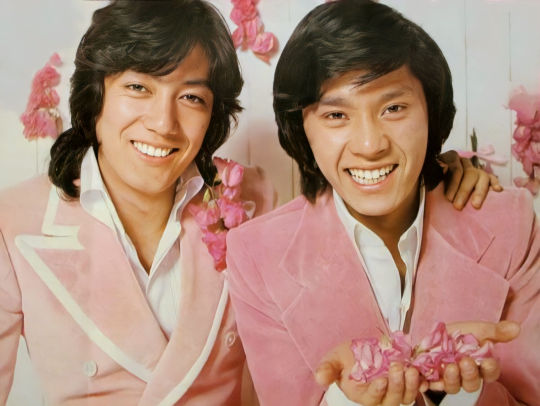
Kenji Sawada and Hideki Saijo, the two stadium-selling male idol superstars from the 80s.
Kenji Sawada, the former lead vocalist of The Tigers, remained a constant presence on the charts throughout the 1970s. Under the guidance of the influential Watanabe Pro agency, Sawada succeeded as a singer and actor. He brought a rockstar aura to his performances, incorporating impactful and extravagant visual elements and pioneering the use of makeup, drawing inspiration from David Bowie and glam rockers. In doing so, Sawada laid the groundwork for visual kei, a movement that would revolutionize Japanese rock in the late 1980s and early 1990s. Nicknamed "Julie" since his early days in the 1960s due to his admiration for Julie Andrews, Sawada continues to thrive as a prominent music figure in Japan, one of the few stars from that era still capable of selling out stadiums.
While girls' adoration often paves the way for male idols to enjoy lengthy careers, there are exceptions to this rule. In 1974, Finger 5 became one of the best-selling idol groups in the country. Comprising five young brothers from Okinawa, they were marketed as Japan's response to the Jackson 5 and consistently churned out hit singles. However, just two years later, their popularity took a nosedive. Several factors contributed to this decline, notably their heavy reliance on the two youngest members, aged only 10 and 12. These youngsters not only grappled with exhaustion from relentless work schedules but also faced the challenges of puberty, causing their voices to change and preventing them from hitting the right notes in their songs. Consequently, Finger 5 lost its appeal.
Finger 5's brief career underscores a crucial aspect of the idol industry: the importance of youthfulness. In Japan's gender-biased society, some male idols from the 1970s were granted the opportunity to age gracefully, evidenced by a few who maintained success well into their 60s and 70s. In contrast, female idols invariably confronted the pressures and inevitable decline associated with aging.
This brings us back to the quintessential idol of that era, Momoe Yamaguchi. By choosing to retire and steadfastly resisting any temptation to reenter the public eye, Yamaguchi effectively became frozen in time at 21 years old, her age at the moment she bid farewell to both showbiz and the public. This solidified her status as a legendary and unattainable icon—an idol who never aged.
70s Japan Trends Through the Music Charts (Part 3)
#enka#kayokyoku#momoe yamaguchi#70s japan#1970s#japanese music#jpop#discover japan#heibon punch#kenji sawada#hideki seiji#junko sakurada#70s idols#finger 5#mari tenchi#rumiko koyanagi#saori minami#four leaves#hiromi go
17 notes
·
View notes